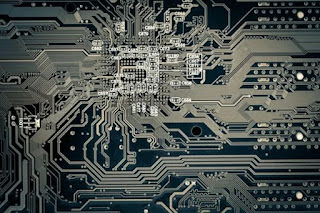Tempo – Definition, Specifications, Technology, and More

Introduction
Tempo, a term originating from music, refers to the speed or
pace at which a piece of music is played. In recent years, the word
"tempo" has gained prominence in various other contexts, particularly
in fitness and technology. This article explores the different facets of tempo,
its definition, specifications, technology, and applications in multiple
fields.
The Definition of Tempo
Tempo, in essence, signifies the rhythm or speed at which an
activity or process occurs. Music indicates the rate of musical composition and
is often measured in beats per minute (BPM). A higher BPM signifies a faster
pace, while a lower BPM denotes a slower pace. Beyond music, the tempo has
transcended into other domains, representing the pace of movement, workouts,
and even technological innovations.
Tempo in Fitness
In the fitness world, tempo has become a significant aspect
of strength training and exercise routines. Tempo training involves controlling
the speed of each repetition during weightlifting or bodyweight exercises. The beat
is usually expressed in four digits, each representing a different phase of the
movement: eccentric (lowering the weight), isometric (holding the weight),
concentric (lifting the weight), and pause.
For instance, a standard tempo notation could be 3010, where
the first digit (3) signifies the lowering phase taking three seconds, the
second digit (0) represents the pause without holding the weight, the third
digit (1) denotes the concentric phase taking one second to lift the weight,
and the final digit (0) indicates no pause at the top of the movement.
Different tempos challenge muscles in various ways, providing a versatile and
effective workout routine.
Tempo in Technology
In the realm of technology, tempo holds a unique position.
It can refer to the speed at which data is processed, transmitted, or analyzed.
For instance, in computing, tempo can represent the clock speed of a central
processing unit (CPU), measured in gigahertz (GHz). A higher clock speed
generally leads to faster processing and better performance.
In networking, tempo can indicate the data transfer rate,
which is crucial for determining data transmission efficiency. It is often
measured in megabits per second (Mbps) or gigabits per second (Gbps). Faster
network tempo leads to quicker data transfers and improved user experience.
Tempo and Artificial Intelligence
Artificial Intelligence (AI) and machine learning
technologies have also integrated the concept of tempo. In AI models, tempo can
signify the time required for a model to process a given set of data and
produce an output. Optimizing the tempo of AI models is crucial to achieving real-time
or near-real-time applications.
Additionally, tempo in AI can relate to the speed at which
models are updated and improved. With rapid advancements in AI technology,
frequent model updates are essential to stay competitive and adapt to changing
data patterns.
Applications of Tempo in Various Fields
a. Sports Training: As mentioned earlier, Tempo training is
widely used in sports training to enhance athletes' performance. It allows
trainers to control the intensity and challenge athletes in specific ways,
depending on their goals and fitness levels.
b. Music Production: In music production, tempo is a
fundamental aspect of composing and arranging music. It sets the pace of a
song, influences the mood, and determines the overall feel of the piece. Digital
audio workstations (DAWs) enable musicians to adjust the tempo to create unique
and dynamic compositions.
c. Medical Applications: In the medical field, tempo monitors
heart rates, respiration rates, and other physiological processes. It plays a
crucial role in assessing an individual's health and can indicate abnormalities
or irregularities in vital signs.
d. Project Management: Tempo is an essential factor in
project management, where it is used to determine the pace of completing tasks
and meeting project deadlines. Efficient project planning and scheduling ensure
that projects are completed on time and within budget.
Conclusion
Initially a concept confined to music, Tempo has evolved
into a versatile and impactful term with applications in various fields. From
fitness and technology to AI and project management, tempo plays a crucial role
in determining processes' pace, efficiency, and effectiveness. Embracing and
understanding tempo in different contexts empowers individuals and
organizations to optimize their performances, enhance outcomes, and stay in
sync with the ever-changing rhythms of the modern world.



Comments
Post a Comment